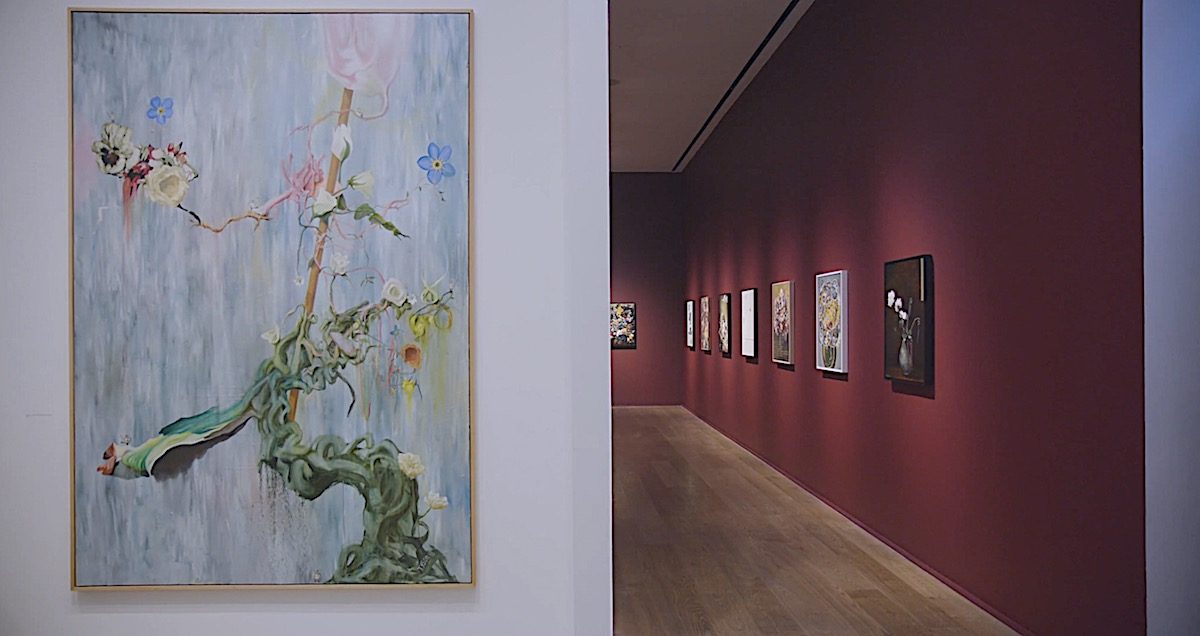If you want to take the temperature of the London art world, here are two places to do so. One is the show for Keith Tyson, at Hauser & Wirth. The other is an exhibition for Enrique Martinez Celaya at Blain/Southern. These two dealers rank very high amongst the international commercial spaces in London.
‘I don’t believe in a permanent self or in developing an artistic style. Our world is full of intricately connected systems and events. I’m simply trying to make work in collaboration with them.’ – KT
Keith Tyson, born 1969 in Cumbria, was the winner of the Turner Prize in 2002. The Guardian newspaper celebrated his win with the headline ‘The wacky boffin of art takes the Turner Prize with dotty diagrams’. It further reported his success as follows: ‘The 33-year-old former Cumbrian shipyard worker dubbed the “mad professor” for his fondness for exploring ideas from the outer limits of cod science and his outlandish proposals for giant neon dinosaurs and the like, had been the bookies’ favourite. As the artist with the best jokes, he was also the public’s first choice.’
Dear dead days! Tyson has shown in several very prestigious spaces since then. He has either just had or is just about to have a show at the Musée Marmottan in Paris (the web defeats me as to the exact dates). He is now a well-established international artist, of a kind that is becoming increasingly rare in the resident British art community. You’d never guess, from what is currently on view at his prestigious London dealer, that he was ever a ‘wacky boffin’. The show is called Life Still, and still, lifes of flowers are pretty much what it is about. Good ones too, but nothing to upset your grannie or to make your maiden auntie feel uncomfortable.
In an interview with Mark Rappalt, available on the Hauser & Wirth web site, Tyson defends his embrace of what some art snobs might think of as kitsch. ‘This kind of work,’ he says, ‘seems to me to be the most aligned to who we are. You’re not an intellectual 24 hours a day – you’re also watching a soap opera. You’re a sexual being and, when the bus hits you, you’re just a lump of matter. Each is true.’
This puts the case. The exhibition is nice to look at but has no ambition to offer anything revolutionary. Rather the contrary is the case. It aims to do things that Western painting, from the Dutch 17th century onwards, has usually done pretty well. In fact, you might almost describe Tyson’s current work as being counter-revolutionary.
Much the same spirit manifests itself in the show of work by Enrique Martinez Celaya now on view at Blain/Southern. Unlike Keith Tyson, he is not well known here. He has had only one show in London before this one. He has. However, been a reasonably big deal elsewhere.

Enrique Martínez Celaya The Mariner’s Meadow 23 May – 13 July 2019 – Blain|Southern London
Born in Cuba in 1964, Martinez Celaya belongs to roughly speaking the same generation as Tyson, but has a much more cosmopolitan, and also a conspicuously more academic (in the broad sense of that adjective) background. His family relocated to Madrid in 1972, then to Puerto Rico in 1975. In 1982 he graduated magna cum laude from Cornell University, with a BSc degree in physics and electrical engineering He later studied for an MFA at the University of Santa Barbara, achieving top honours. After graduation there, he attended the Skowhegan School of Painting and Sculpture in Maine. He is currently Provost Professor of Humanities and Arts at USC in Los Angeles, the city where he now lives and works, and is also a Montgomery Fellow at Dartmouth College. It is difficult to imagine anyone more firmly entrenched in the American visual arts establishment, and he has a long string of past shows in America to prove it.
Don’t let this put you off his show at Blain/Southern. Entitled The Mariner’s Meadow, it combines top-quality professionalism, with a lyrical view of the natural world. Though different in terms of the actual subjects chosen, it is not far off in terms both of actual artistic approach, and in those of the feelings, it aims to convey to the spectator. Recognisable subject matter combines with lyricism. In a catalogue note, Martinez
Celaya says:
‘I left the Caribbean a long time ago, but the sea came along with me as a stowaway. That life was inextricably connected to the sea. The sea was the end of all paths and the edge of all comings and goings, the reference point for conversations. And the all-absorbing witness of a history of colonialism and longing.’
Since I spent my own childhood in Jamaica, the next-door island to Cuba, I have no difficulty in understanding this. However, I don’t think Martinez Celaya’s paintings will offer any barrier to viewers who don’t possess this particular advantage. This is not an artist who has any interest in providing barriers to understanding. It’s all there – you don’t have to work it out. Though work is of high quality, it makes no claim to moving the conversation on.
In a sense, I think this is what a lot of good contemporary painting, as opposed to other kinds of art is now doing. It no longer struggles to find revolutionary new forms of expression. It is content to let that happen elsewhere. In. for example, the ever-expanding realm of digital imagery. In the video games world. In virtual reality. In artificial intelligence. Painters seem to be losing faith in the idea of purely abstract designs, with no underlying references to the visible world, made on a flat surface with paint. Perhaps they think that images of that kind, though by this time universally acceptable, can be made more efficiently by other means.
Words: Edward Lucie-Smith © Artlyst 2019 Photos Courtesy Hauser & Wirth and Blain|Southern

